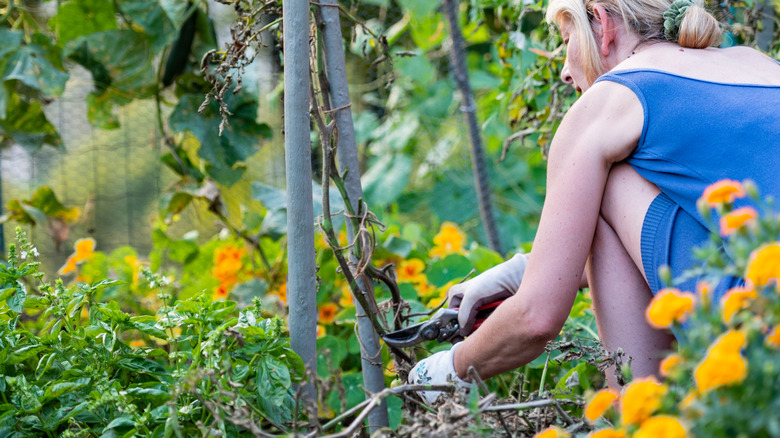Signs Your Tomato Plant Is Battling A Bacterial Infection (And What To Do About It)
There could be many reasons why your tomato plant (Solanum lycopersicum) is turning brown, but let's hope it is not a bacterial infection! If it is, know what to look for so you can catch it early. It's very rare that a plant will survive a bacterial infection because there is no cure. Most times, the plant must be removed to protect your healthy plants. Because of this, your best defense is to discourage bacterial growth before it starts.
There are three major types of bacterial infections for tomato plants: bacterial spot (caused by four species of Xanthomonas), bacterial speck (caused by Pseudomonas syringae), and bacterial canker (caused by Clavibacter michiganensis). Recognizing each is vital to the survival of your plant. Each infection requires moisture. Bacterial spot and canker form in warm conditions, while bacterial speck occurs in cool conditions. Bacterial spot and speck are most notable on the fruit as raised lesions that become black sunken spots. These conditions allow for an added fungal infection, meaning you also have to worry about keeping tomato plants blight-free. Bacterial canker causes wilting, discoloration, and fruit lesions, as well as stem cankers. Bacterial infections are known to be seedborne and to infect the surrounding soil, surviving over winter to attack your next tomato crop. This makes preventing future infections that much more complex.
Recover your garden from infection
When plants are infected, it's important to remove them before the bacteria can spread to healthy plants. After removal, you can burn the tomato plants, if that is in accordance with your local regulations, of course. If not, try adding them to a hot compost or burying them away from your garden. Do not eat fruit from these plants. Simply move on and prepare your garden for a better future.
After removal, it's important to disinfect the area and materials to the best of your ability to prevent the spread to healthy or future plants. When transplanting tomato plants, make sure you're using new clean trays. Old trays could contain dormant bacteria waiting to get your new plants. Gardening stakes and tools are similar — make sure to remove old dirt and properly clean and disinfect your garden tools before reusing them. You should also wash your hands or wear clean gloves.
One way you can help prevent bacterial growth is by practicing crop rotation. Avoid planting solanaceous crops (tomato, eggplant, pepper, and potato) for at least a few years — longer if your plants had bacterial canker — after you remove infected tomato plants. Improving soil drainage is also vital. Watering your tomato plants at the base in the morning can help to keep conditions fairly dry. Make sure you don't wet the leaves to prevent spreading. Always keep your eyes peeled for bacterial infection in your tomato garden and take action as soon as you notice signs.

